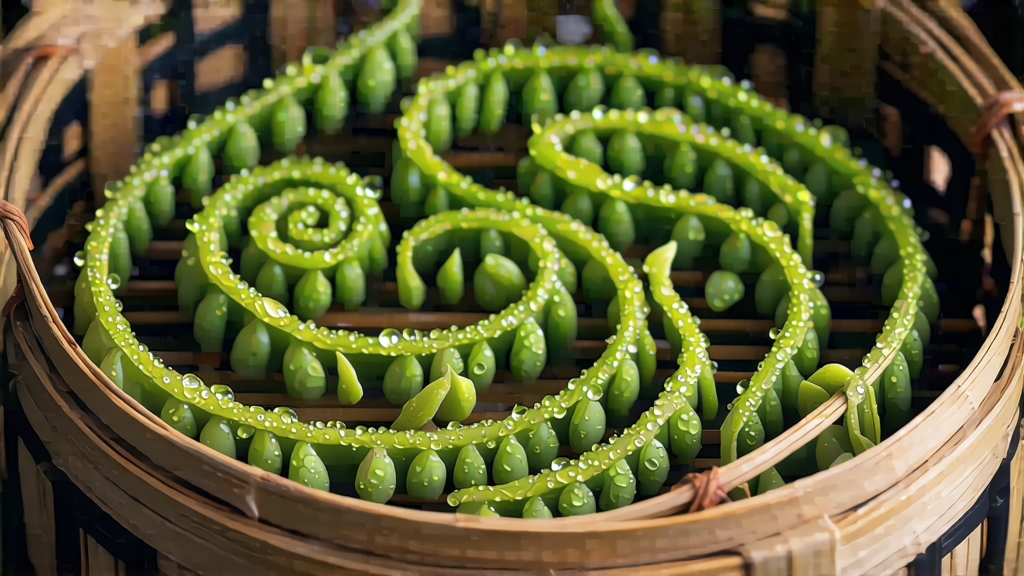
Tucked between the mist-laden cliffs of Dongting Mountain and the vast, wave-wrinkled surface of Lake Tai in Jiangsu Province, Biluochun—literally “Green Snail Spring”—has captivated Chinese scholars, emperors, and poets for more than a thousand years. To the uninitiated, the name may sound whimsical, yet every syllable carries meaning: “green” for the jade color of the liquor, “snail” for the tight spiral shape each bud assumes after firing, and “spring” because the leaves are plucked at the very awakening of the season. In the global galaxy of green teas, Biluochun is the quiet luminary whose fragrance can fill a room before the water even reaches a boil, and whose taste can transport a drinker to a terraced mountainside at dawn.
Historical whispers place Biluochun’s birth during the Tang dynasty (618-907 CE), but it was the Kangxi Emperor (r. 1661-1722) who canonized the name. Court chronicles tell of a spring morning when the emperor, traveling incognito south of the Yangtze, was served a tea whose perfume reminded him of the “fearful symmetry” of a snail shell. Delighted, he christened it Biluochun, replacing its rustic original name “Xia Sha Ren Xiang” (“Scary Fragrance”) with something more elegant. From that moment the tea became tribute, carted northward in bamboo-lined chests to the Forbidden City, where eunuchs measured it by the gram and poets compared its aroma to the first peach blossom kissed by dew.
Today, Biluochun remains narrowly defined by Chinese national standards: only leaf plucked within a 12-kilometer radius of Dongting’s East and West mountains may bear the name. Within that microclimate, two cultivars dominate: the heirloom “Dongting Small-Leaf” and the slightly hardier “Fuding Large-Leaf,” introduced in the 1970s to extend the harvest window. Purists insist the original shrub, a temperamental plant that prospers only in acidic, well-drained granite soil, yields a more refined cup—peach, orchid, and a hint of marine air—while the Fuding offshoot offers a bolder, almost spinach-like sweetness that stands up to multiple infusions.
The crafting of Biluochun is a race against time and oxidation. Picking begins literally before sunrise on the Qingming festival, when two leaves and a bud are still curled like sleeping commas. Standards are ruthless: no dew, no insect bite, no stems thicker than a cat’s whisker. Within minutes of plucking, the baskets are carried downhill to cottages whose courtyards have been swept clean of any distracting scent. Here the leaves undergo a six-step choreography: withering on bamboo trays for thirty minutes to soften cell walls, pan-firing at 180 °C for precisely 90 seconds to arrest enzymes, rolling by hand into spirals against the hot metal, a second firing at 120 °C to lock in shape, gentle rubbing to polish the downy white tips, and finally a slow charcoal bake over glowing embers of local bayberry wood. The entire sequence must finish before sunset; otherwise, the tea will “turn yellow,” acquiring the dull, hay-like note that connoisseurs call “old man’s breath.”
Western drinkers often confuse Biluochun with Japanese sencha because both are delicate greens, yet the resemblance ends at the leaf silhouette. Where sencha is flat and needle-like, Biluochun is a tiny jade snail, each curl dusted with silvery trichomes that shimmer like frost. When dropped into a pre-warmed glass, the spirals slowly unfurl, releasing a fragrance so intensely fruity that newcomers sometimes ask if the tea has been scented. It has not; the aroma is entirely natural, a product of the tea garden’s intercropping tradition. On Dongting Mountain, tea bushes share terraces with peach, plum, and loquat trees, their roots intermingling so that leaf absorbs ambient floral esters. The result is a cup that begins with the bright snap of snow pea and finishes with the lingering sweetness of white peach.
To brew Biluochun properly, one must unlearn many rules associated with robust greens. The leaf is so tender that water hotter than 80 °C will scald it, extracting bitterness and muting the hallmark fruit note. The classic Jiangsu method calls for a tall, thin glass—never porcelain—so the drinker can